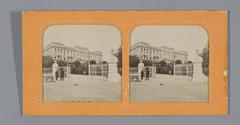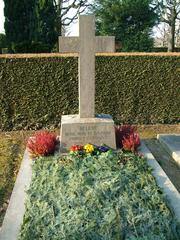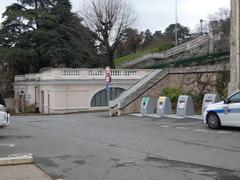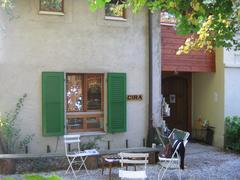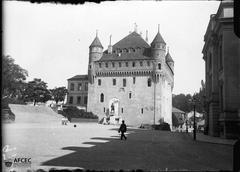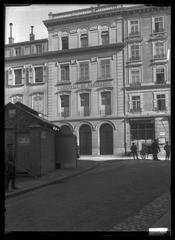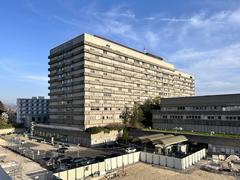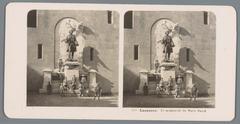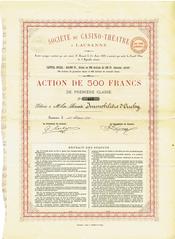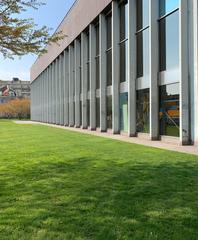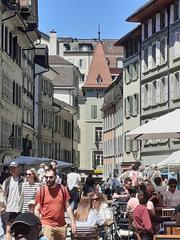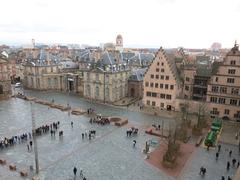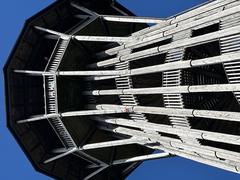Guide to Visiting Pavillon Thaïlandais in Lausanne
Published Date: 24/07/2024
Introduction to Pavillon Thaïlandais
Nestled in the picturesque Parc du Denantou along the shores of Lake Geneva, the Pavillon Thaïlandais in Lausanne, Switzerland, is a breathtaking testament to the enduring friendship between Thailand and Switzerland. This architectural marvel, gifted by King Bhumibol Adulyadej of Thailand, who had a personal connection to Lausanne, was inaugurated on March 17, 2009, by Princess Maha Chakri Sirindhorn (notrehistoire.ch). The pavilion, constructed in the traditional Thai architectural style known as Jaturamuk, serves as a cultural bridge, offering visitors a glimpse into Thai art, architecture, and traditions. This guide provides comprehensive information on the history, visiting hours, ticket details, and practical tips to enhance your experience at the Pavillon Thaïlandais.
Contents
- Introduction
- History and Significance of Pavillon Thaïlandais, Lausanne
- Origins and Diplomatic Significance
- Construction and Architectural Excellence
- Artistic and Cultural Significance
- Location and Accessibility
- Visiting Hours and Tickets
- Nearby Attractions and Travel Tips
- Diplomatic and Cultural Impact
- Visitor Experience
- Preservation and Maintenance
- Educational and Cultural Programs
- Frequently Asked Questions (FAQ)
- Conclusion
History and Significance of Pavillon Thaïlandais, Lausanne
Origins and Diplomatic Significance
The Pavillon Thaïlandais in Lausanne symbolizes the enduring diplomatic relationship between Thailand and Switzerland. This exquisite structure was a gift from King Bhumibol Adulyadej of Thailand, who had a personal connection to Lausanne, having lived there from 1933 to 1951. The pavilion was presented to the city of Lausanne on May 28, 2006, to commemorate the 75th anniversary of diplomatic relations between the two nations (notrehistoire.ch).
Construction and Architectural Excellence
The construction of the Pavillon Thaïlandais began in 2007 and was completed in 2009. It was built by skilled Thai artisans in collaboration with Lausanne’s service des parcs et promenades. The pavilion was inaugurated on March 17, 2009, by Princess Maha Chakri Sirindhorn, the daughter of King Bhumibol Adulyadej (notrehistoire.ch).
The pavilion is constructed in the traditional Thai architectural style known as Jaturamuk, characterized by its four-sided design and a central Mandapa, which resembles a miniature royal palace. The structure measures 6 meters in width, 6 meters in length, and 16 meters in height, including the spire (notrehistoire.ch).
Artistic and Cultural Significance
The Pavillon Thaïlandais is a testament to the excellence of Thai architecture and traditional art. It features intricate woodwork assembled using the “technique à queue fourchue,” a traditional method of wood joinery. The pavilion is adorned with over 100,000 gold leaves, glass decorations, and detailed wood carvings, showcasing the high level of craftsmanship involved in its creation (notrehistoire.ch).
These elements are not merely decorative but are imbued with cultural significance. The use of gold and glass in Thai architecture is often associated with religious and royal buildings, symbolizing purity, prosperity, and divine protection. However, the pavilion itself is not a religious structure but rather a representation of a royal palace, intended for use during outdoor festivities (notrehistoire.ch).
Location and Accessibility
The Pavillon Thaïlandais is situated in the northeastern part of Parc du Denantou, a serene and picturesque park in Lausanne. This location was chosen to provide a tranquil setting that complements the pavilion’s aesthetic and cultural significance. The park is easily accessible to visitors, making it a popular spot for both locals and tourists (lausanne-tourisme.ch).
Visiting Hours and Tickets
The Pavillon Thaïlandais can be visited year-round, with no entrance fee required. The park itself is open from dawn until dusk, making it convenient for visitors to explore the pavilion at their leisure. For guided tours and special events, it is best to check the official Lausanne tourism website or contact the local tourist information center for the latest updates (lausanne-tourisme.ch).
Nearby Attractions and Travel Tips
While visiting the Pavillon Thaïlandais, make sure to explore other nearby attractions in Lausanne, such as the Olympic Museum, the Lausanne Cathedral, and the Ouchy waterfront. Public transportation is readily available, and the park offers ample space for picnics and leisurely walks. For the best experience, consider visiting during the spring or summer months when the park’s flora is in full bloom (wanderlog.com).
Diplomatic and Cultural Impact
The pavilion serves as a cultural bridge between Thailand and Switzerland, fostering mutual understanding and appreciation of each other’s heritage. It stands as a symbol of the strong and friendly relations between the two countries, which have been maintained for over seven decades. The presence of such a structure in Lausanne highlights the city’s cosmopolitan nature and its role as a hub for international diplomacy and cultural exchange (thaiembassy.ch).
Visitor Experience
Visitors to the Pavillon Thaïlandais can expect a unique cultural experience. The pavilion is not only a visual delight but also an educational opportunity to learn about Thai architecture and art. Information plaques and guided tours provide insights into the history and significance of the pavilion, enhancing the visitor experience (lausanne-tourisme.ch).
The surrounding Parc du Denantou offers a peaceful environment for relaxation and reflection. The park’s lush greenery and scenic views make it an ideal spot for picnics, leisurely walks, and photography. The pavilion itself is a popular subject for photographers, thanks to its intricate details and striking appearance (wanderlog.com).
Preservation and Maintenance
Maintaining the Pavillon Thaïlandais is a collaborative effort between the city of Lausanne and Thai authorities. Regular upkeep ensures that the pavilion remains in pristine condition, preserving its beauty and cultural significance for future generations. This ongoing maintenance is crucial, given the delicate nature of the materials used in its construction, such as gold leaf and intricate wood carvings (notrehistoire.ch).
Educational and Cultural Programs
The pavilion also serves as a venue for various cultural and educational programs. These events aim to promote Thai culture and heritage, offering workshops, exhibitions, and performances that highlight traditional Thai arts, crafts, and music. Such programs provide valuable opportunities for cultural exchange and learning, enriching the local community and fostering greater appreciation for Thai culture (thaiembassy.ch).
Frequently Asked Questions (FAQ)
Q: What are the visiting hours for Pavillon Thaïlandais?
A: The Pavillon Thaïlandais can be visited year-round from dawn until dusk.
Q: How much do tickets to Pavillon Thaïlandais cost?
A: There is no entrance fee required to visit the Pavillon Thaïlandais.
Q: Are guided tours available?
A: Yes, guided tours are available. Check the official Lausanne tourism website for the latest updates.
Q: What are some nearby attractions?
A: Nearby attractions include the Olympic Museum, Lausanne Cathedral, and Ouchy waterfront.
Conclusion
The Pavillon Thaïlandais in Lausanne is more than just an architectural marvel; it is a symbol of friendship and cultural exchange between Thailand and Switzerland. Its rich history, artistic excellence, and cultural significance make it a must-visit destination for anyone interested in exploring the diverse cultural landscape of Lausanne. Whether you are a history enthusiast, an art lover, or simply looking for a peaceful retreat, the Pavillon Thaïlandais offers a unique and enriching experience (lausanne-tourisme.ch).
Sources and References
- notrehistoire.ch. (n.d.). Pavillon Thaïlandais Lausanne. notrehistoire.ch
- Lausanne Tourism. (n.d.). A Royal Pavilion in Lausanne. lausanne-tourisme.ch
- Thai Embassy. (n.d.). The Thai Pavilion in Lausanne. thaiembassy.ch
- Wanderlog. (n.d.). 1 Day Lausanne Itinerary. wanderlog.com
- Olympic Museum. (n.d.). The Olympic Museum. olympic.org
